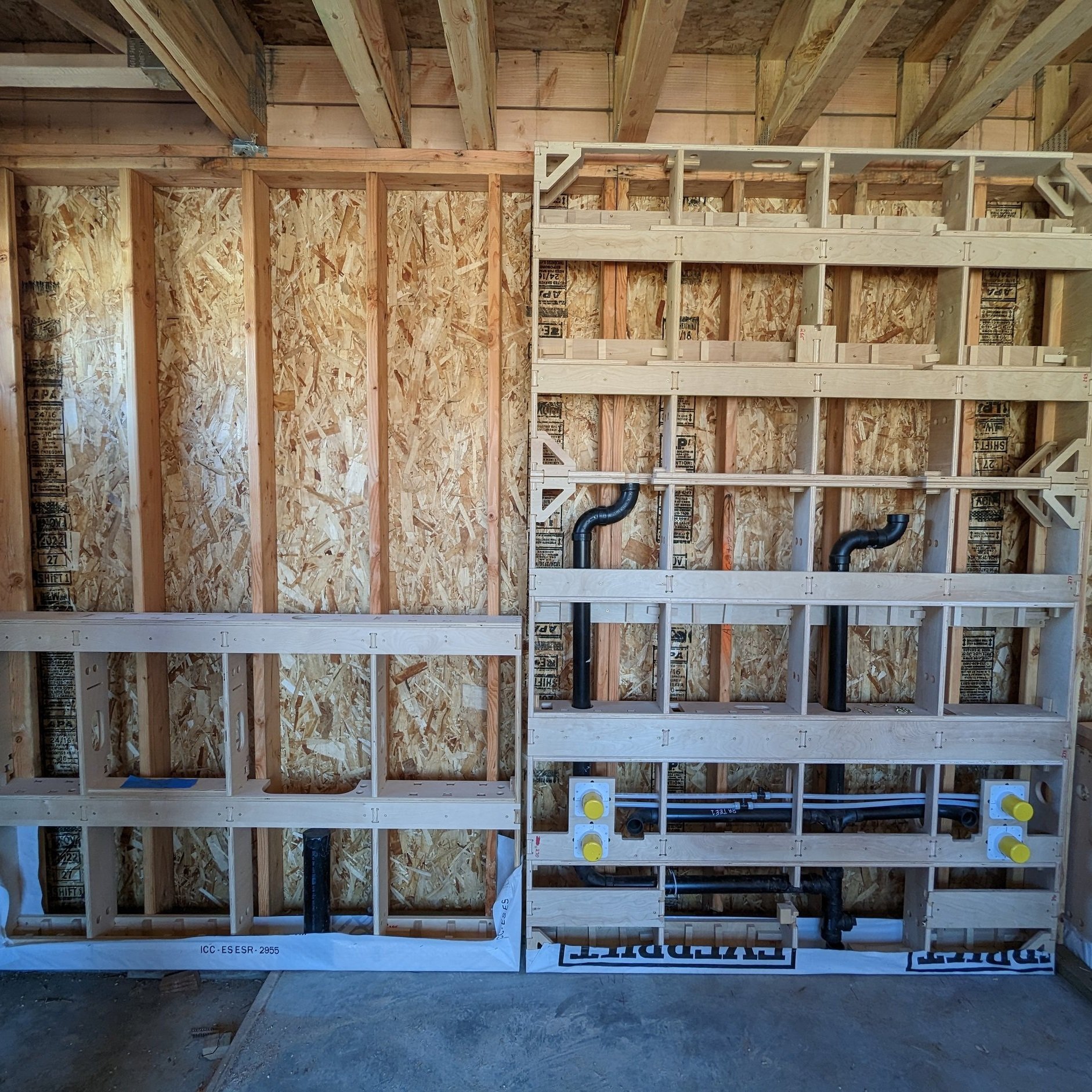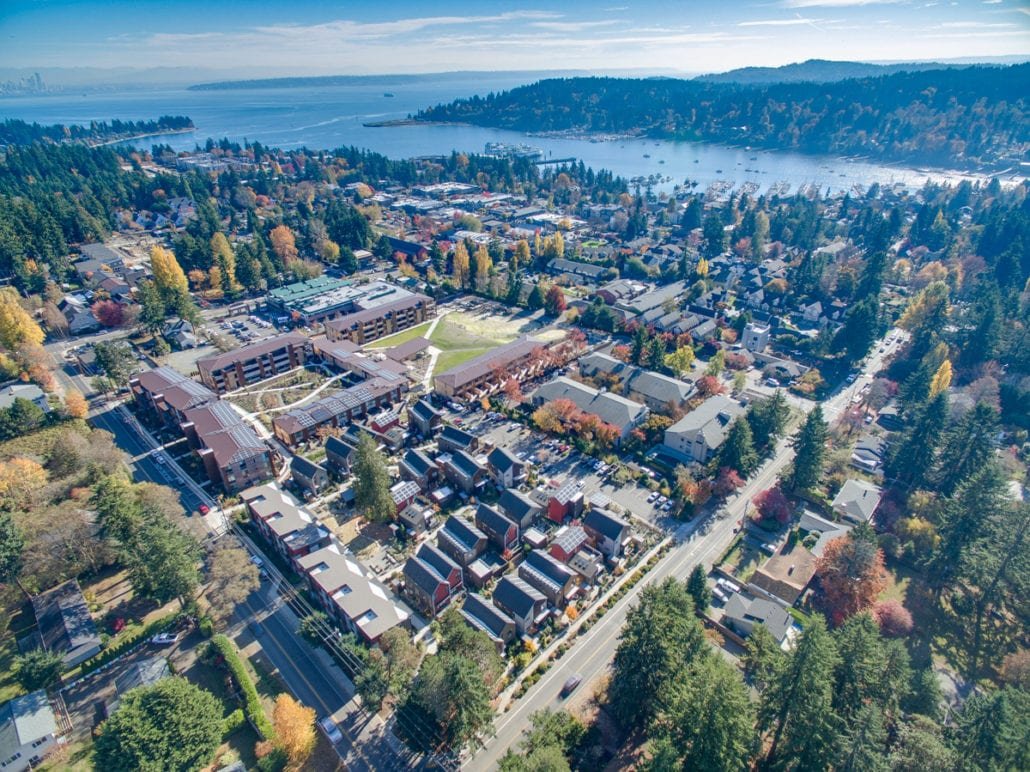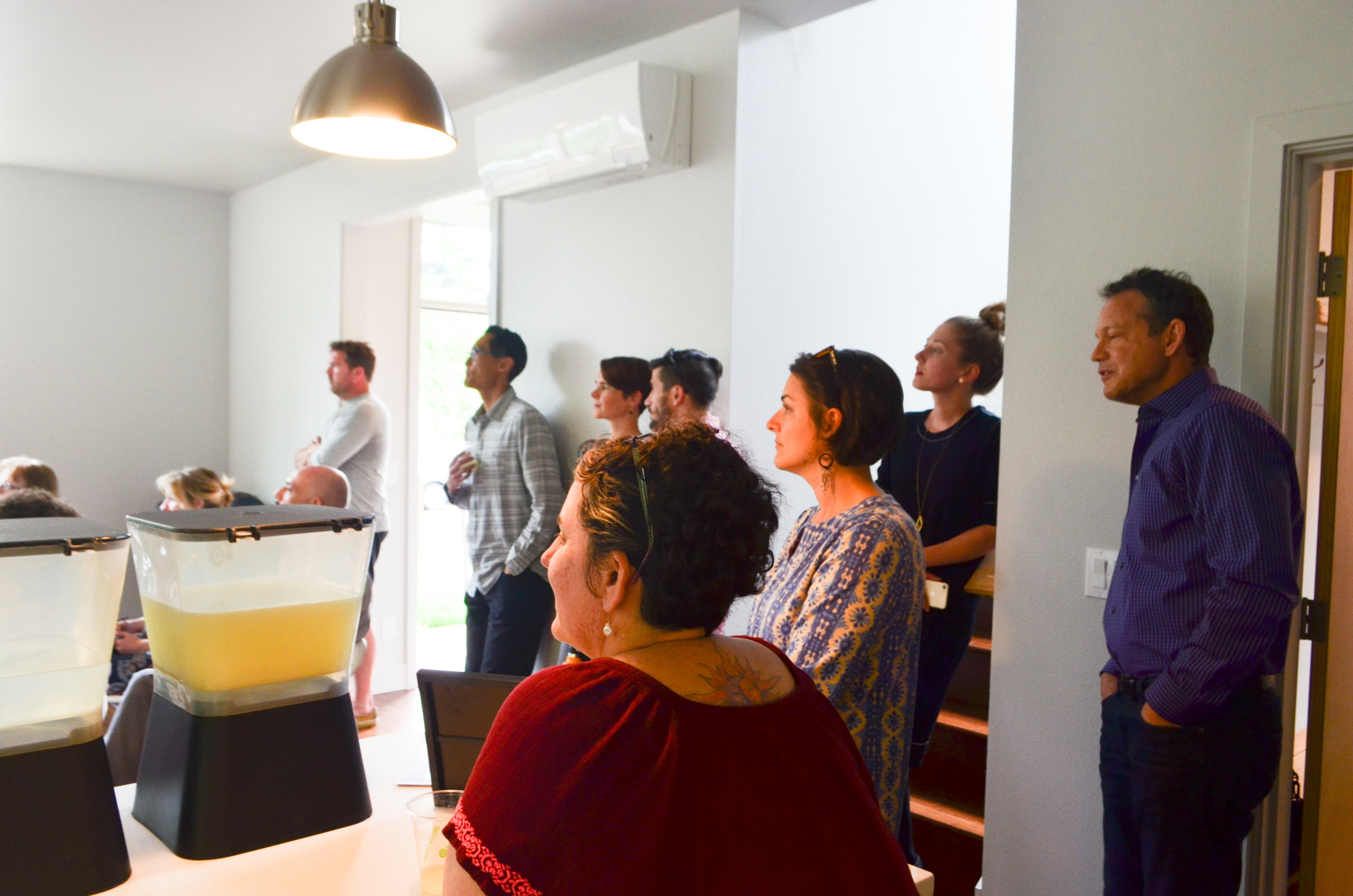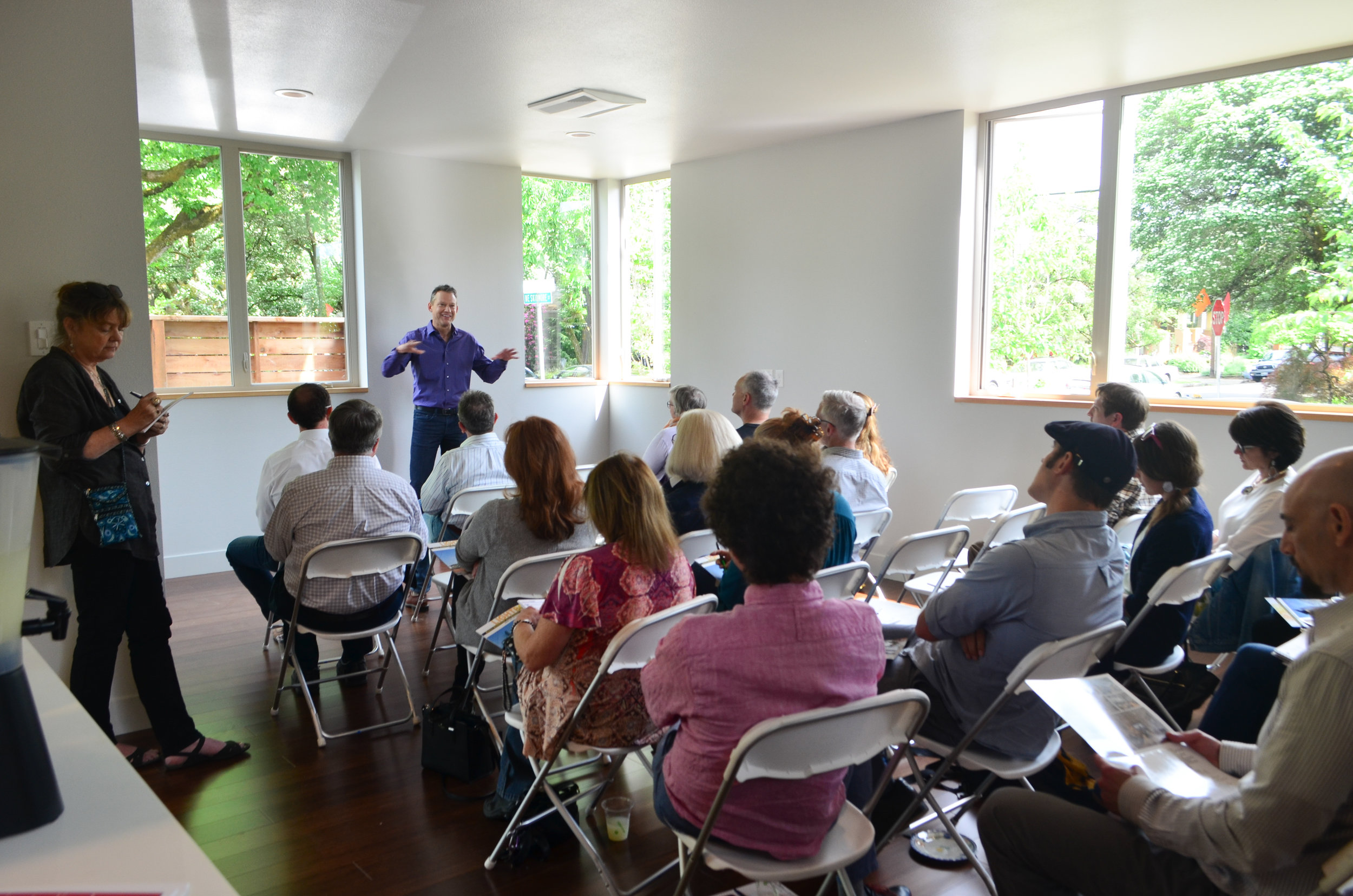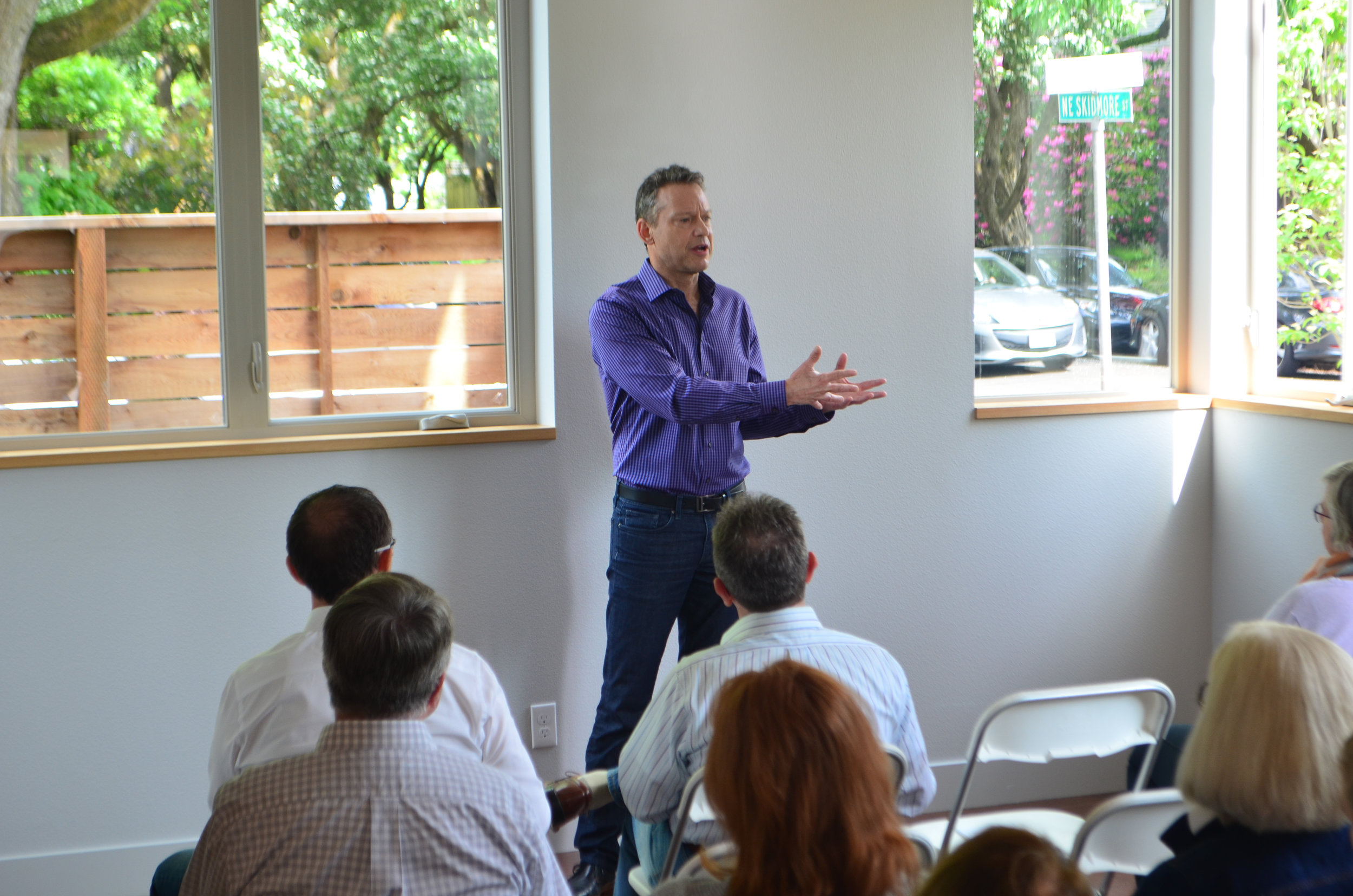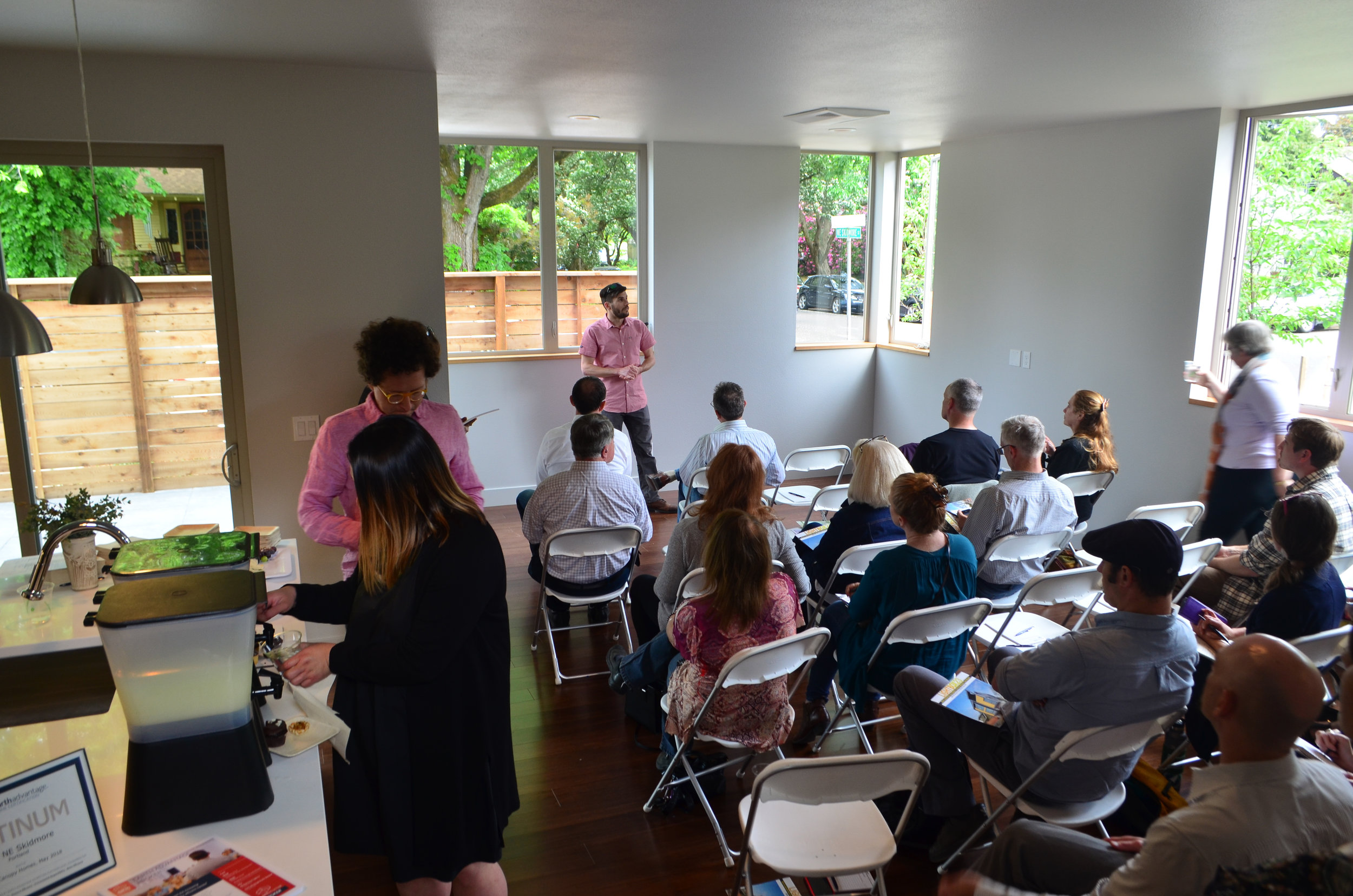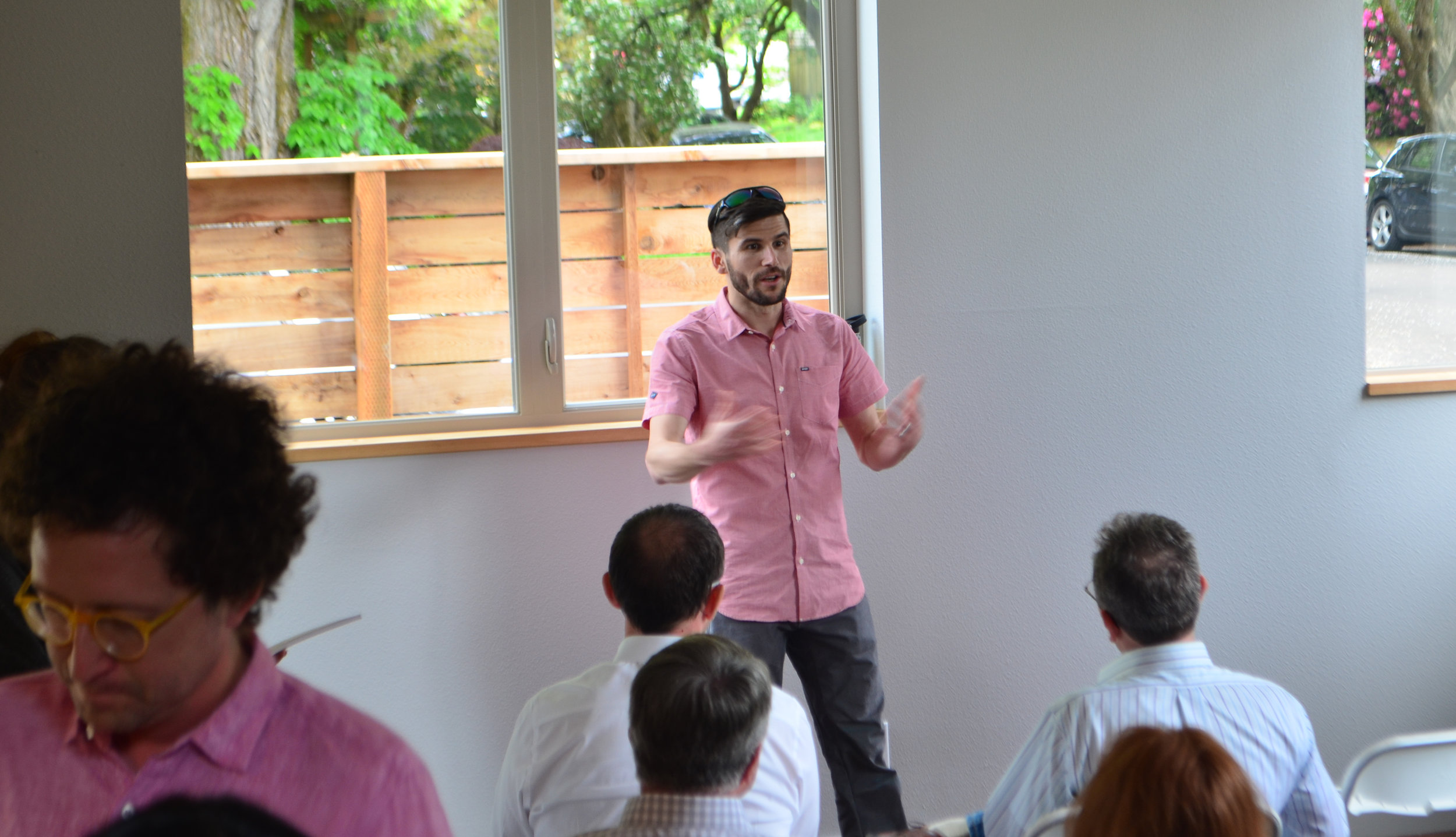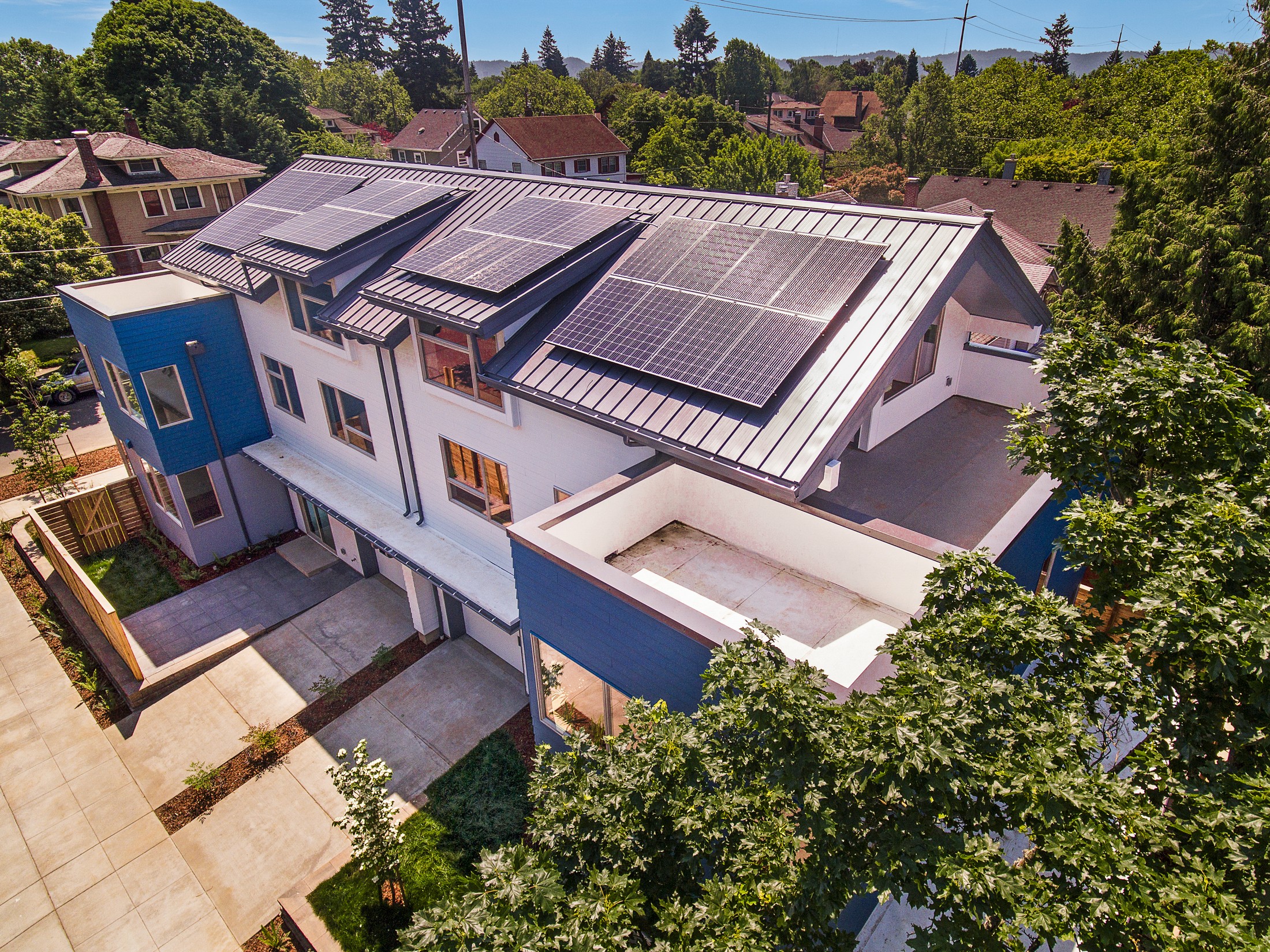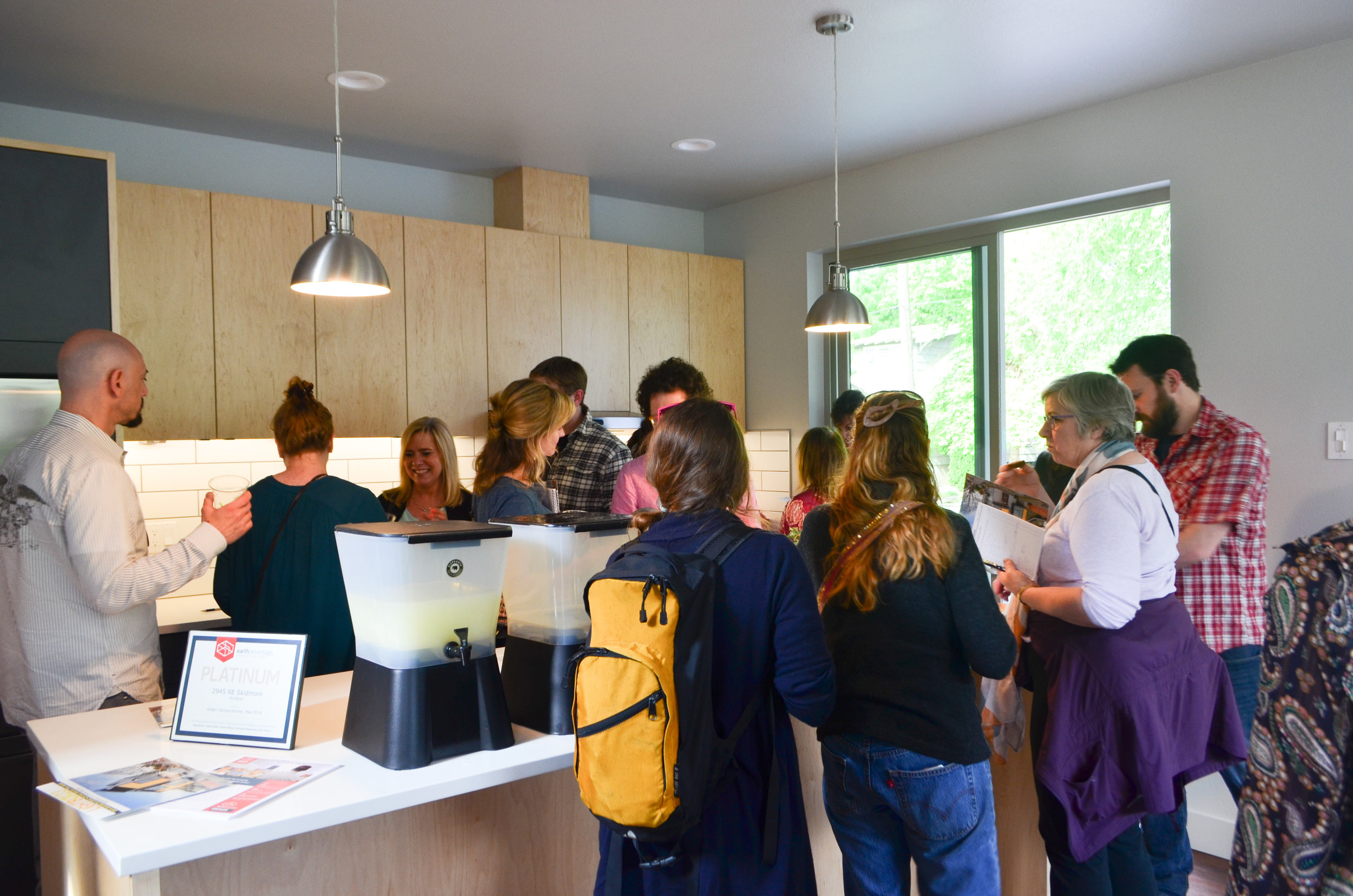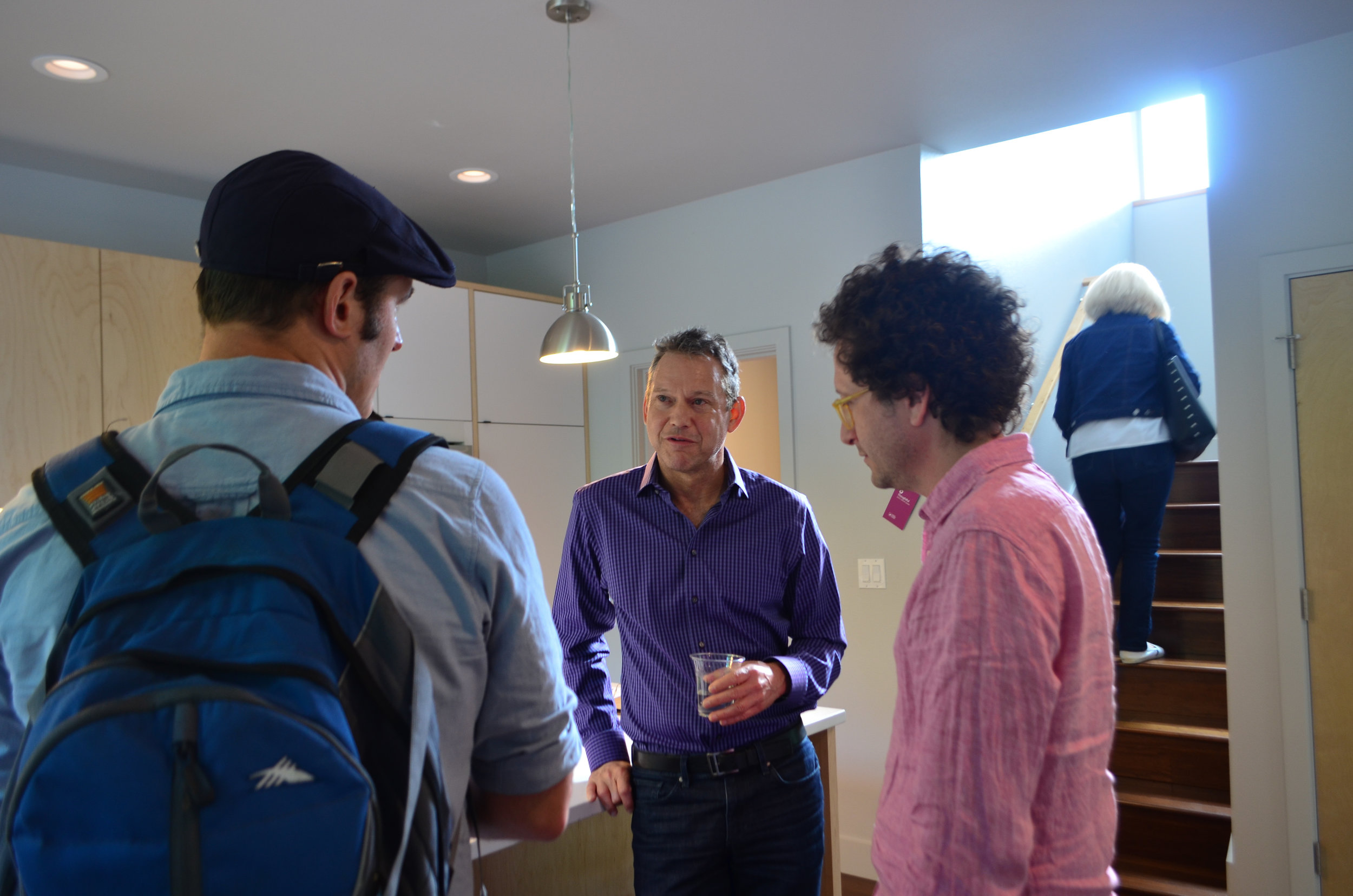By Aaron Fairchild
In the heart of Ballard, arguably one of the region’s most opportunity rich communities, seven newly constructed, affordable homes will soon be available to rent for families earning 60% and 80% of the area median income. In partnership with many others, Green Canopy will complete these Net Zero Ready, all-electric, healthy, Built Green certified and affordable homes this summer.
At the front end of the COVID-19 pandemic the crossed the equinox and entered into spring and I wrote,
“As the earth crosses the threshold of equinox into spring, humanity finds itself awakening to the reality that society too is crossing a threshold.”
Shortly thereafter, in the fullness of springtime in bloom, much of America, and many parts around the world, experienced a secondary awakening, crossing yet another threshold. Mr. Floyd’s brutal passing was the moment the world recognizes as a threshold’s leading edge into new societal territory. The future our hearts know is possible, feels possible. The better version of our society and interactions feels possible. I am grateful for those in the streets protesting in favor of ushering in that better version of ourselves. They march for change and transformation, for justice, for equity, for the young, the old, for Black lives, for the left behind, marginalized and excluded; they march for humanity’s better version to bloom.
The work needed to realize this time’s greater purpose takes courage.
Indeed, we are all linked by our common humanity and feel that we must do something. In 2017 Green Canopy officially changed its mission to, We build homes, relationships, and businesses that help regenerate communities and environments. The journey since then has been filled with learning how to navigate rapidly changing markets, learning what regenerating communities requires, and learning how to cost effectively build the best-in-class housing that regenerative communities deserve. It has also been filled with attentive listening into new relationships and deepening existing ones. Through it all I have come to understand that for Green Canopy to realize its full potential, those relationships are the most critical component to our regenerative approach.
In this moment, can we let go of fear, listen and collectively focus on what action is needed to create more equitable, healthier, and resilient communities and relationships?
Taking the difficult yet necessary steps to explore the white supremist American culture begins with the listening and vulnerability required to let empathy flow in. From there a personal journey can begin. One that is full of exploration and learning the history that undergirds the present, and how we contribute to injustice and inequity. With lessons learned and relationships built throughout Green Canopy’s history, our team continues to learn and improve its ability to respond with compassion. May we prove ourselves worthy of this work, and may you hold Green Canopy accountable to the work our future requires. Below is but one example of this work.
Can we consider new and more equitable ways to provide for society’s basic needs such as, health, food, housing, education, security, and employment?
In the heart of Ballard, arguably one of the region’s most opportunity rich communities, seven newly constructed, affordable homes will soon be available to rent for families earning 60% and 80% of the area median income. In partnership with many others, Green Canopy will complete these Net Zero Ready, all-electric, healthy, Built Green certified and affordable homes this summer.
These homes were designed far beyond what the basic code requires to accommodate families; five of the units have three bedrooms, and two units have two bedrooms with garages. We are humbled to work with so many aligned partners on this project. The relationships required to produce deep green and affordable homes, utilizing a reverse displacement strategy into an existing community of opportunity, are many and worthy of note. Without the contribution of all of these people and organizations, this project would not have been possible.
With deep gratitude for the work require for change, we would like to thank:
Russ Katz with Windermere Real Estate who initiated this project at the beginning – 7 new Net Zero Energy Ready homes were built in our community because of the opportunity you helped bring together.
Julian Weber and the talented team at JWA, we appreciate the way you demonstrate your values through the innovation of your designs and your own Net Zero Energy office building!
Malsam-Tsang Structural Engineering for your long-term partnership and consistent, thoughtful approach to structural design.
The investors in Green Canopy’s Cedar Fund for championing a project at the intersection of your values.
Urban Black and Kateesha Atterberry for your friendship, guidance and desire to collaborate on making these best-in-class homes available to families in need.








